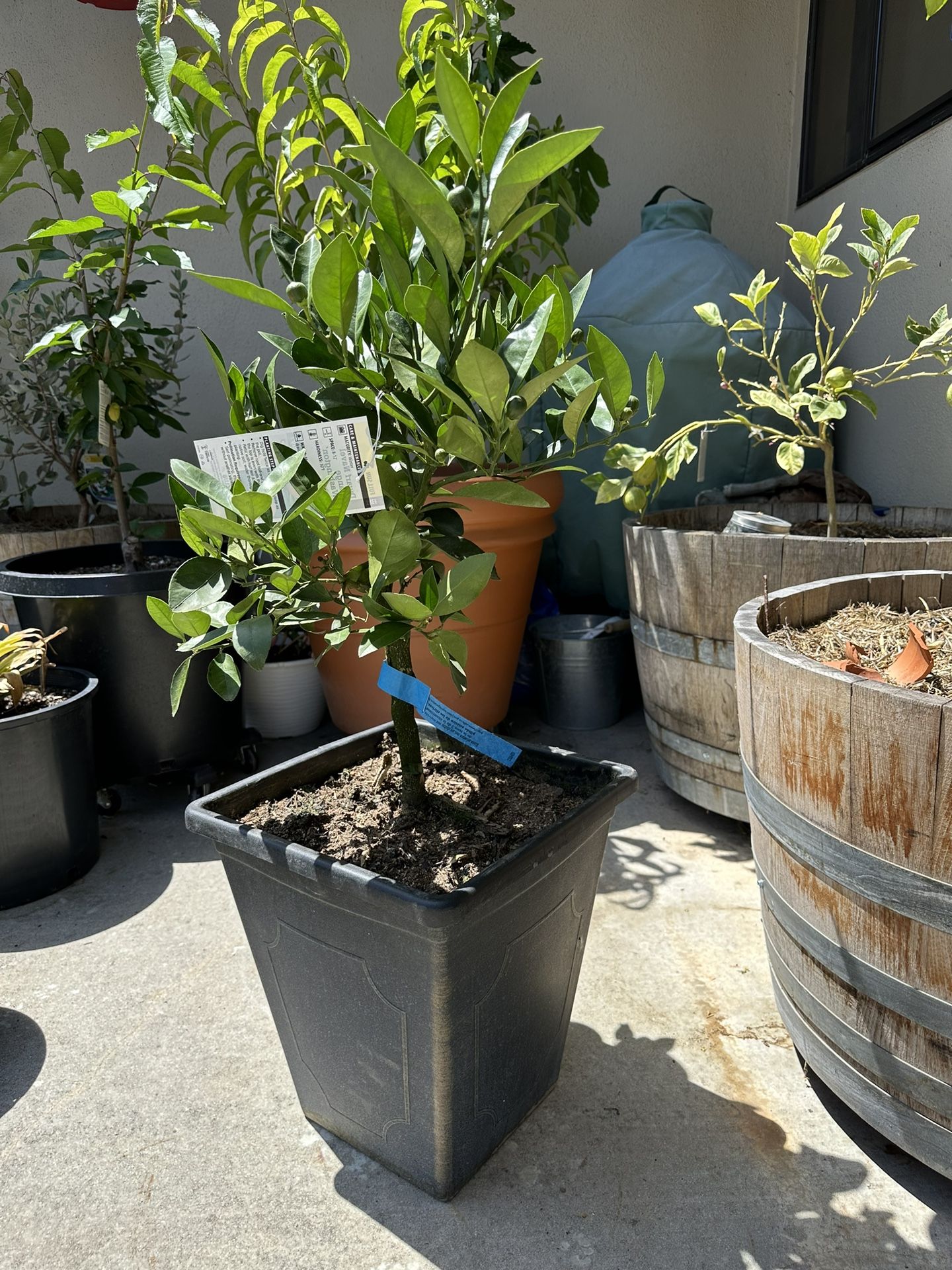Dwarf Navel Orange Tree In Decorative Pot - Patio Citrus - TRUE DWARF
$75
Last updated 24 days ago in Salinas, CA
Condition: New
Listed in categories: Home & Garden - Lawn & Garden - Plants & Seeds
Chat securely on the app
Sold by

SOLD
Additional images
Details
Season of Interest
Summer
Plant Type
Tree
Description
$75 FIRM I HAVE ONE TRUE DWARF NAVEL ORANGE IN A DECORATIVE POT. Patio Citrus Tree This is a true dwarf - not semi dwarf! These are much harder to find and they can remain in this pot for many years. This one already has baby fruit on it as you can see in the photos. Imagine growing your own citrus in a small space like your patio. What are navel oranges? Navel oranges are a winter orange with thick, bright orange skin and sweet, juicy fruit. They can be used in cooking, in salads, desserts, and sauces, and for snacking on raw. Navel oranges are a winter cultivar of the species Citrus sinensis, which also includes cultivars such as Cara Cara oranges, blood oranges, and Valencia oranges. Navel oranges are round to slightly oval and 3 to 4 inches in diameter, with medium to thick rind which is bright orange in color with a slightly pebbly texture. Underneath the rind is a white pith which is easily removed. The fruit itself is seedless and made up of 10 to 12 sections of tender, juicy flesh with a sweet, tangy, and tart flavor with low acidity. Whole sweet oranges have been grown for thousands of years, the first navel orange tree was discovered in Brazil in 1820. They're named because of the small indentation on the outside of the rind, situated at the opposite end from the stem, that somewhat resembles a human navel. What that is actually, is an undeveloped "twin" fruit caused by a genetic mutation. Since navel oranges are seedless, they're cultivated via grafting, where a flowering bud is attached to another tree. This means that all navel orange trees are considered genetic clones of the original navel orange tree from Brazil. Navel oranges are available from November through June, with peak season in January and February. They're used in cooking, for their juice, their zest, and for eating out of hand. Their thick skin makes them easy to peel.
Take action
Item location map
Map is approximate to keep seller’s location private.
Related searches
- Patio furniture
- Shed
- Lawn mower
- Bbq grill
- Hot tub
- Tractor
- Plants
- Riding lawn mower
- Tents
- Pool
- Garage door
- Camping gear
- Fountain
- Fake plants
- Flower pots
- Sprinklers
- Succulents
- Plant pots
- Porch swing
- Flower vase